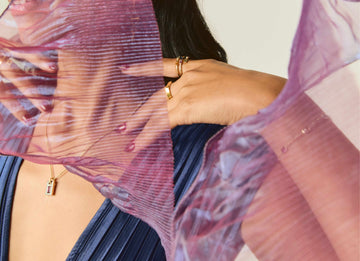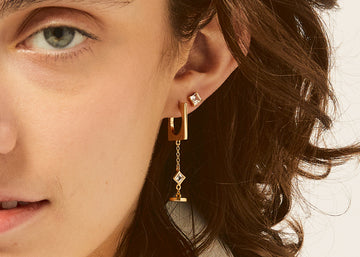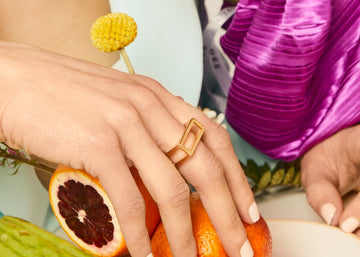We get this question all the time: “Is waterproof jewelry actually a thing?”
Short answer: kind of. Longer answer: let’s get into it.
What “Waterproof” Actually Means
When jewelry brands say their pieces are “waterproof,” what they really mean is:
you can shower, swim, sweat, or accidentally jump into the ocean with it — and it won’t instantly tarnish or fall apart.
But here’s the truth: no jewelry is completely waterproof forever.
Some materials just handle life better than others.
Materials That Can Handle the Splash
If you’re someone who never takes your jewelry off (we get it), here’s what to look for:
-
Solid gold (14k or 18k) – your best friend. It doesn’t rust, tarnish, or react to water.
-
Platinum – equally tough and built for everyday wear.
-
Stainless steel or titanium – super durable, surprisingly affordable, and low-maintenance.
-
Sterling silver (.925) – beautiful and timeless, but it does react to moisture and air over time. A little tarnish is natural — and easy to polish off — but it’s best to keep silver dry when you can.
-
Rhodium-plated sterling silver – this is sterling silver coated with rhodium (a rare, bright white metal from the platinum family). Rhodium helps prevent tarnish and gives silver a brilliant, mirror-like finish. It’s more resistant to moisture than bare silver, but not totally waterproof — over time, the rhodium layer can wear away, especially with frequent exposure to water or friction.
-
Gold vermeil – a solid silver base with thick gold plating (2.5+ microns). It’s water-resistant, not waterproof. Occasional showers? Fine. Daily swimming? Not ideal.
-
Gold-plated or “fashion” jewelry – looks great, but water is its enemy. Think of these pieces as your “off-duty” jewelry.
What About PVD-Coated Jewelry?
You might’ve seen the term PVD (Physical Vapor Deposition) floating around — it’s the next-gen way brands make jewelry more durable.
PVD coating is a highly durable layer applied to the surface of your jewelry that acts like a protective finish. It bonds at a molecular level, making your piece more resistant to scratches, water, sweat, and everyday wear — almost like a super-tough clear coat — way stronger than traditional plating. It gives jewelry a long-lasting color finish that’s resistant to sweat, water, and everyday wear.
So yes — PVD jewelry is about as close to “waterproof” as it gets without being solid gold or platinum. You can shower, swim, and live in it without the color fading quickly.
Just remember: even PVD-coated pieces last longer with a little care. Avoid harsh chemicals and dry after saltwater or chlorine.
How to Tell if Jewelry Is “Water-Friendly”
Look for details like:
-
The metal type — solid gold, platinum, stainless, titanium, or PVD-coated pieces are your safest bets.
-
The finish or coating — rhodium plating, PVD coating, and thick vermeil (2.5 microns or more) all help protect against tarnish and everyday wear.
-
If you’re shopping from a small brand, just ask! “Waterproof” isn’t an official jewelry standard, so every maker defines it a little differently.
So… Does Waterproof Jewelry Exist?
Yes — but only some of it.
Solid gold, platinum, titanium, and stainless steel? Go ahead, live in them.
PVD-coated pieces? Your low-maintenance, everyday heroes.
Sterling and rhodium-plated silver? Still gorgeous — just need a little more care.
What does this mean for my LÚDERE Jewelry?
At LÚDERE, we make pieces you can truly live in. Every piece is thoughtfully crafted to handle real life. We make our pieces in either solid gold, gold vermeil with 2.5 microns and PVD coated for extra durability, or rhodium-plated sterling silver for that bright, long-lasting shine. Because we believe jewelry should fit the way you actually live, not the other way around.







